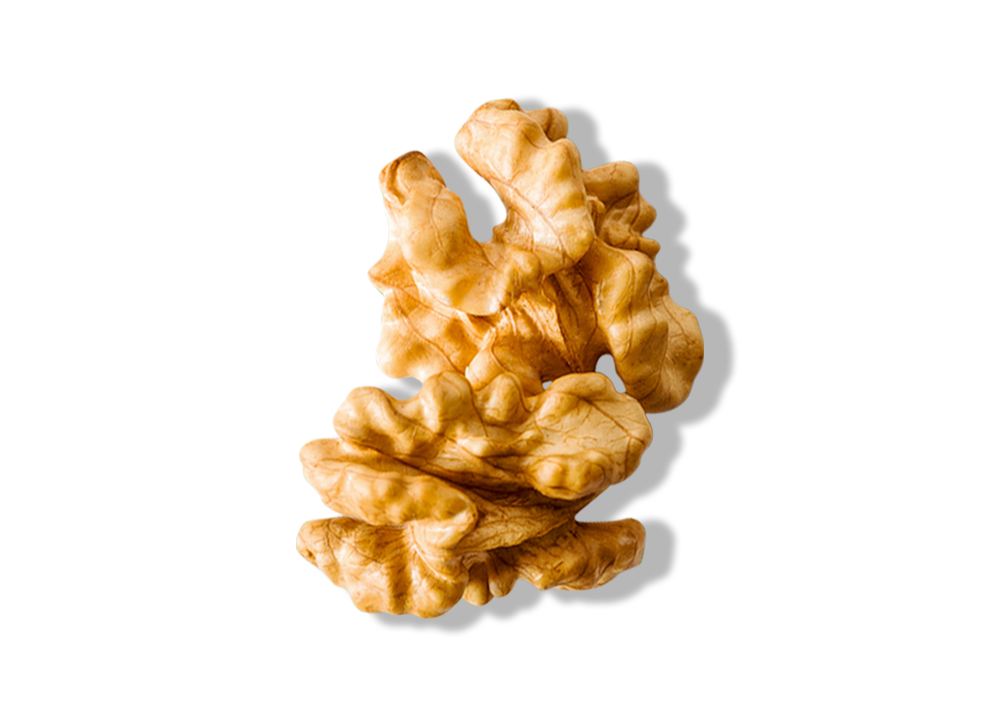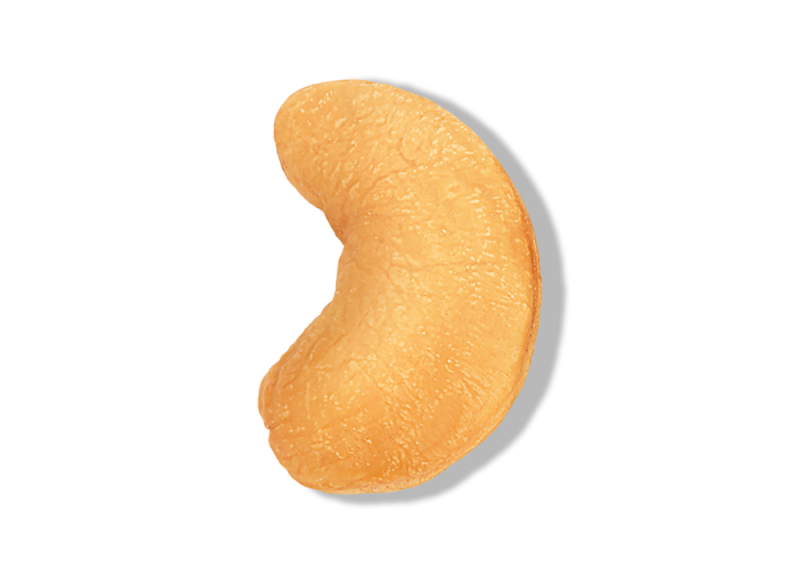
Walnut
Walnuts: A Nutritional Powerhouse
- Abundant in omega-3 and omega-6 fatty acids, supporting heart and brain health.
- Low in carbohydrates, with a significant portion being fiber, aiding digestion and promoting satiety.
- Comprising 65% healthy fats and approximately 15% protein, they provide sustained energy.
- Possessing phytosterols, gamma-tocopherol, omega-3 fatty acids, and antioxidant polyphenols, walnuts contribute to lower risks of cardiovascular diseases and aid in cancer prevention.
- Enhance cognitive function with their rich content of monounsaturated fats, polyphenols, and vitamin E, supporting optimal brain health and performance.
| Nutrition Facts | Per 100 g |
|---|---|
| Energy | 2736kj/654kcal |
| Fat | 65,21g |
| Of which saturates | 6,126g |
| Carbohydrates | 13,71g |
| Of which sugars | 2,61g |
| Fibers | 6,7g |
| Protein | 15,23g |
| Sodium | 0,005g |
What if the brain just decided that it wanted to look like a walnut?
The brain was successful be- cause they both have a left and a right hemisphere and share some similar internal wrinkles. The truth is this correlation has not been scientifically proven (yet), but they still have many things in common (yes, they go together so well like Aries and Sagittarius) because walnuts contain high amounts of omega 3 fatty acids such as alpha-linolenic acid that promotes a healthy….. brain! Mind-blowing? Oh yes, indeed.
Check out this crazy thing about nature:
Try to visualise a walnut next to the human brain. How many similarities do you spot? Probably a plethora. The shape of the walnut is made by nature and inexplicably mimics the brain’s form.





